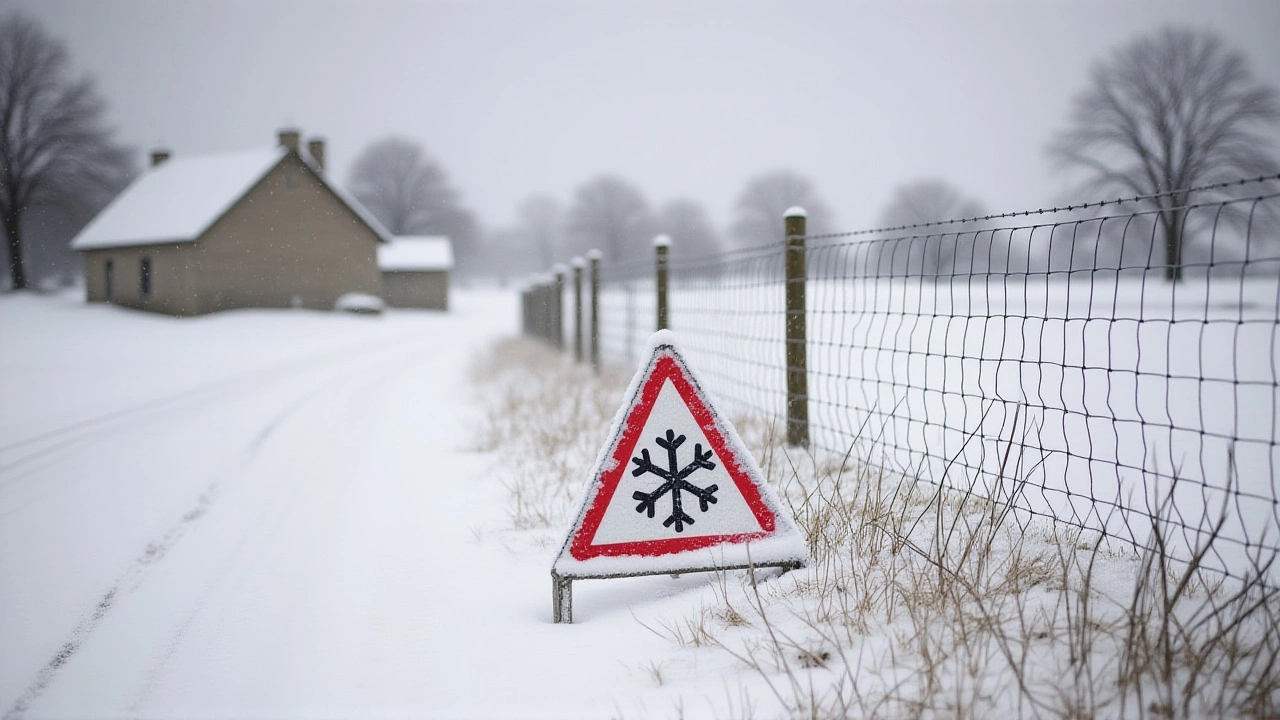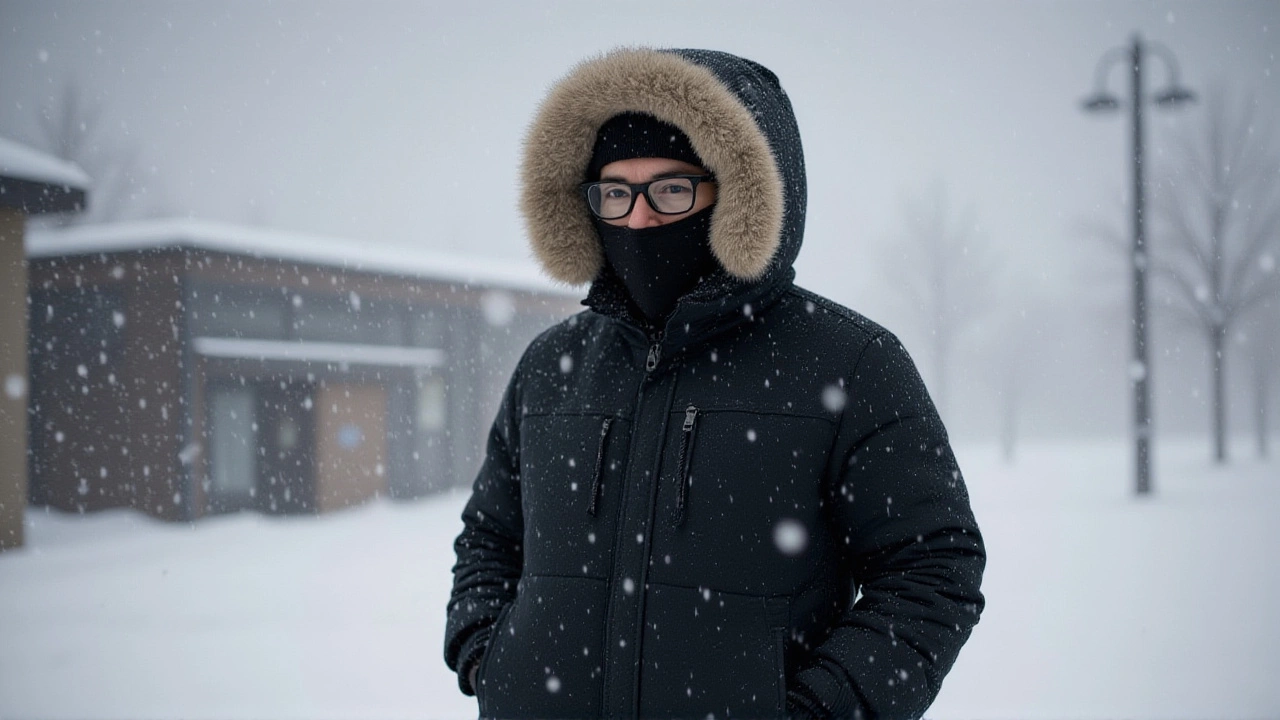When OpenSnow released its November 2025 winter forecast, it didn’t just update ski resort operators—it set off quiet conversations across the mid-Hudson Valley about whether this year’s snowpack will finally make up for last season’s dry spell. The forecast, published on OpenSnow’s website, points to a weak but brief La Niña episode shaping the 2025-2026 winter season across the United States. That’s not the dramatic, snow-dumping La Niña of 2020 or 2021. But it’s enough to shift the odds. And for communities like Poughkeepsie, Dutchess County, and the surrounding five-county region, even a small edge matters.
What ‘Weak La Niña’ Really Means for Winter
La Niña isn’t a storm. It’s a pattern. Cooler-than-average waters in the eastern Pacific shift jet streams, often pushing storm tracks northward. That usually means more snow for the Pacific Northwest and less for the Southwest. But this year? OpenSnow’s meteorologists hint that the usual rules might not apply. "Typical La Niña effects may be," the forecast reads—then stops. That trailing sentence is the whole story. It’s not that the science is broken. It’s that the system is playing catch-up after a long, warm fall. The Pacific is cooling, yes, but not enough to lock in a strong signal. The result? A fleeting, uncertain influence. Think of it like a dimmer switch instead of a lightbulb. You know it’s on, but you’re not sure how bright.The Hudson Valley’s Quiet Anticipation
Meanwhile, over at the Poughkeepsie Journal, a local paper with deep roots in the mid-Hudson Valley, readers got a different kind of forecast on November 21, 2025. The headline: "Will mid-Hudson Valley see above-average snowfall?" No numbers. No charts. Just a careful, hopeful tone. The article didn’t cite NOAA or any specific climatologist. It didn’t mention the polar vortex, even though global reports were buzzing about it. Instead, it leaned into local experience: "Residents remember 2018. And 2014. And 2009. We’re due." That’s the real forecast here—not data, but memory. The region averages about 35.5 inches of snow annually in Dutchess County. Last winter? Just 22. That’s not just a bad season. It’s a financial hit for small ski hills, snowplow operators, and hardware stores stocking salt. When the Poughkeepsie Journal asks if this winter will be better, it’s not just asking about weather. It’s asking if the community can breathe again.
Why This Forecast Feels Different
What’s striking isn’t the lack of data—it’s the lack of certainty. In past years, meteorologists could point to Oceanic Niño Index values, SST anomalies, or pressure gradients. This time? OpenSnow’s team is hedging. And that’s telling. Climate change hasn’t erased La Niña. But it’s scrambled the script. Warmer autumns delay the first snow. Thaw-freeze cycles make snowpack unstable. Ski resorts in Vermont and New York are adapting—more snowmaking, more energy use, more costs. But they’re also watching. Because if this weak La Niña delivers even 10% more snow than last year, it could mean the difference between breaking even and closing early.What’s Next? December Holds the Keys
The real answers won’t come until December. That’s when OpenSnow typically releases its next update, and when the Poughkeepsie Journal will likely follow with regional breakdowns. NOAA’s official forecast—still unmentioned in these early reports—will drop around mid-December. That’s when we’ll know if this weak signal strengthens, fades, or gets drowned out by other patterns. For now, the only thing certain is this: winter is coming. And for the families in Ulster County who shovel driveways, the businesses in Rockland County that sell winter gear, and the kids waiting for the first snow day—every inch counts.
Behind the Scenes: Who’s Calling the Shots?
OpenSnow, headquartered somewhere in the continental U.S., operates like a niche weather startup—focused, data-driven, and built for skiers and snowboarders. It doesn’t have the resources of NOAA, but it has something they don’t: hyper-local insight. The Poughkeepsie Journal, owned by Gannett Co., Inc. and based in McLean, Virginia, brings that same local lens to the news. Neither organization named a lead meteorologist. That’s not negligence. It’s strategy. In an era of information overload, people trust institutions more than individuals. So they speak as teams. And that’s why the forecast feels less like a prediction and more like a shared expectation.Frequently Asked Questions
How does a weak La Niña differ from a strong one in terms of snowfall impact?
A strong La Niña typically boosts snowfall by 20-40% in the northern Rockies and Pacific Northwest, while a weak one may only add 5-10%—if at all. This year’s forecast suggests the signal is so faint that regional factors like local topography and soil moisture may matter more than the Pacific pattern itself. In the mid-Hudson Valley, that means even a slight shift could tip the scale from below-average to near-normal snowfall.
Why hasn’t NOAA’s official forecast been mentioned yet?
NOAA typically releases its seasonal outlooks in mid-December, after gathering more data from October and November ocean temperatures. Early forecasts from private firms like OpenSnow are preliminary—they’re meant to spark conversation, not set policy. The public often mistakes these early releases for final predictions, but they’re more like early drafts.
What’s the economic impact of a low-snow winter in the mid-Hudson Valley?
Last winter, several small ski areas in Dutchess and Ulster Counties reported revenue drops of up to 30%, forcing layoffs and shortened seasons. Snow removal contractors saw fewer contracts, and hardware stores stocked less salt and shovels. A return to even average snowfall could restore $2.3 million in seasonal economic activity across the five-county region, according to a 2023 regional economic study.
Is the polar vortex relevant to this forecast?
The polar vortex—a high-altitude wind pattern—can amplify cold outbreaks in winter, but it’s not directly tied to La Niña. While European outlets linked it to this season’s forecast, U.S. agencies haven’t confirmed any alignment yet. In the Northeast, a strong polar vortex could mean bitter cold and heavy snow. A weak or split vortex? More variable conditions. Right now, it’s a wildcard.
Why does OpenSnow focus on recreational snow instead of general weather?
OpenSnow was founded by ski enthusiasts who realized commercial forecasts ignored snow depth at specific resorts. Their models track elevation, terrain, and snowpack retention—not just temperature and precipitation. That’s why they’re trusted by ski patrol teams and mountain towns. For them, a "weak" La Niña isn’t a scientific footnote—it’s a business risk.
What should residents do while waiting for December’s forecast?
Prepare for variability. Check snowblower engines, stock up on salt, and consider signing up for local emergency alerts. Don’t assume it’ll be a white Christmas—but don’t assume it won’t be either. The most reliable winter strategy these days isn’t prediction. It’s flexibility.

